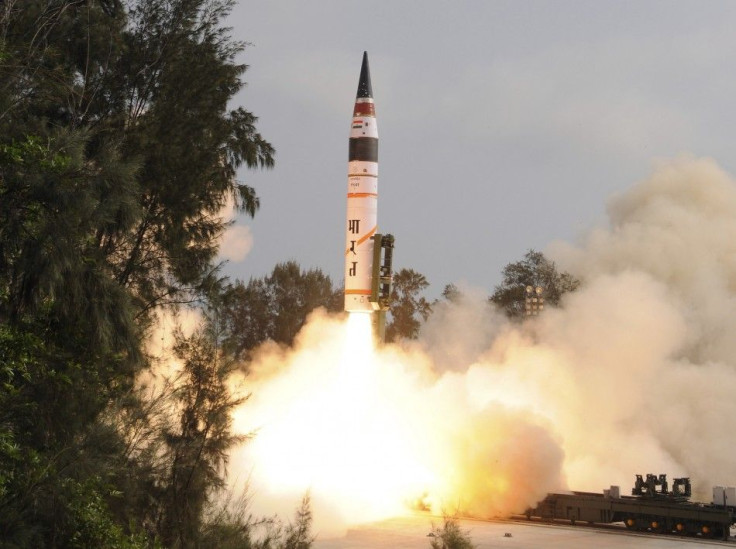India’s Nuclear Missile Launch ‘Overwhelming Success’; China Downplays Threat

India successfully launched the Agni-V rocket, a nuclear-capable missile, in an act that pushes the South Asian giant into the elite ranks of global powers with inter-continental ballistic missile technology.
India now joins China, Russia, France, the United States, the United Kingdom and perhaps Israel as the only countries with similar capabilities.
The rocket was propelled from a road-mobile launcher on Thursday morning in India from Wheeler Island off the coast of the eastern state of Orissa, one day after inclement weather delayed the lift-off.
The 17-meter-long device flew for about 20 minutes before returning to Earth at a designated target point somewhere near Indonesia in the Indian Ocean.
The ships located in mid-range and at the target point have tracked the vehicle (missile) and witnessed the final event, said Ravi Gupta, a spokesman for India’s Defence Research and Development Organization (DRDO), the government agency that develops military technology.
With a range of at least 5,000 kilometers (3,100), the 50-ton missile could reach anywhere in Asia and even into Eastern Europe. It is the longest-range missile in India’s military arsenal.
BBC reported that it cost about $480 million to develop the rocket.
V. K. Sarawat, scientific adviser to the Defence Minister, told The Hindu newspaper of India: “With this missile launch, India has emerged as a major missile power. We have joined a select group of countries possessing technology to design, develop, build and manufacture long-range missiles of this class and technological complexity.”
V.G. Sekaran, director of Advanced Systems Laboratory, which designed the Agni-V, described the launch as an “overwhelming success.”
The newspaper also reported the missile is able to carry a 1.1-ton nuclear warhead, although on this test flight, a dummy payload was substituted.
It was a perfect launch. It met all the test parameters and hit its pre-determined target, SP Das, director of the test range, told the BBC.
India’s Prime Minister Manmohan Singh congratulated all the scientists involved in the launch and gushed: “You made the nation proud… Today's launch represents another milestone in our quest for our security, preparedness and to explore the frontiers of science.”
The Agni-V missile, part of India’s ever-expanding military arsenal, has been dubbed by Indian media as the “China killer.” While India has been buying military hardware and weapons at a rapid pace over the past 10 years, China’s arms program is significantly larger. As such, Chinese officials have downplayed the threat India’s missile program may present.
In response to India’s successful missile test, Liu Weimin, a spokesman for China's Foreign Ministry told reporters in Beijing: “China and India are both important developing countries and emerging economies, we are not rivals, we are cooperative partners. We should both cherish the fact that our current good relations were hard to come by; we should make common efforts, maintain Sino-Indian friendship, deepen strategic cooperation, incentivize common development, and contribute to protecting not only regional but global peace and stability.”
Indeed, according to the Associated Press, China Central Television (CCTV) described the launch as a “historic moment for India and it shows that India has joined the club of the countries that own ballistic missiles.”
However, CCTV also added [India’s missile] does not pose a threat in reality.
While Indian government officials wouldn't explicitly say the missile is intended as a show of strength to China, Arun Sahgal, joint director of the Institute of National Security Studies in Delhi and a former brigadier general, told BBC: Agni-V will provide India with much-needed dissuasive deterrence against China which at present it lacks. With Agni-V trials, India's strategic [shortcomings] will to a large extent be overcome.”
Reporter Yifei Zhang also contributed to this article.
© Copyright IBTimes 2024. All rights reserved.




















